Empire National Bank Building
Introduction
Text-to-speech Audio
Images
Ca. 1911 photo of the building from “Industrial and Picturesque Clarksburg, W. Va.” The publication mentions that the bank holds $250,000 in capital, $1,400,000 in deposits, and makes $130,000 of profits each year.
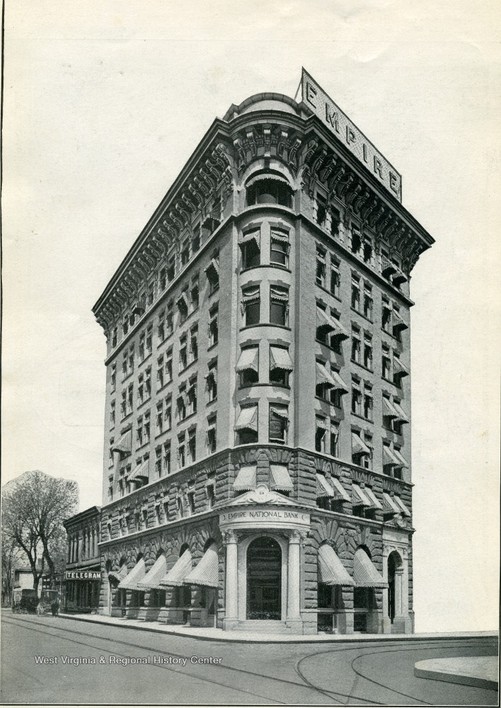
A vintage postcard of the Empire National Bank Building.
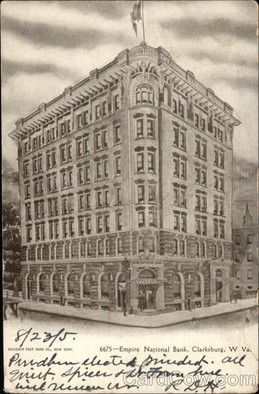
Color postcard of Empire Building.
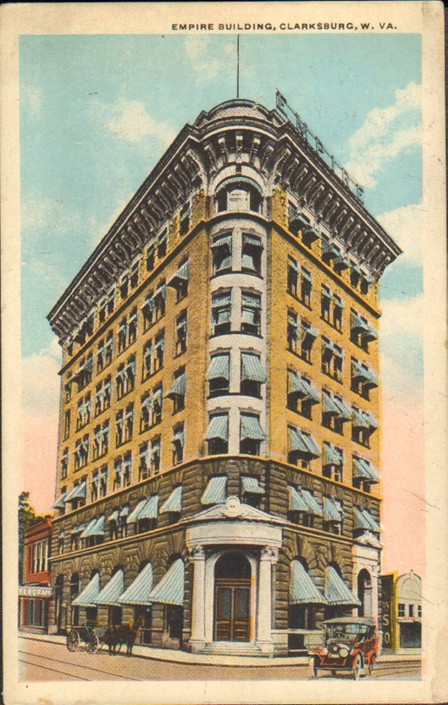
Color postcard of interior of Empire National Bank in 1911.
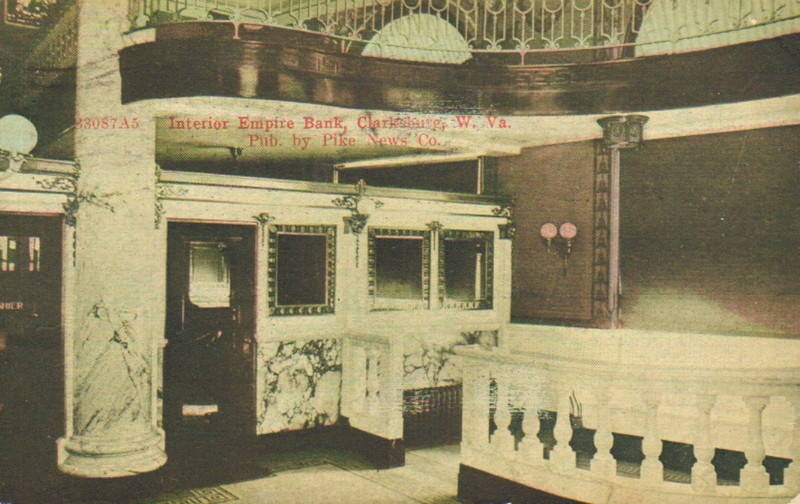
The Empire National Bank Building.
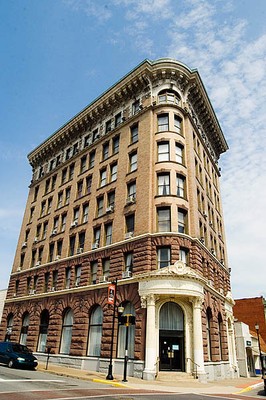
Backstory and Context
Text-to-speech Audio
The Highland family was one of Clarksburg’s first recorded settlers in 1802. In 1863, the State Legislature appointed commissioners to divide their counties into townships, name each township, map out the boundaries, and file them with the recorder of the county. The commissioners named in the act for Harrison County were Jacob Highland, Luther Haymond, Sidney Haymond, and John W. Boggess. The Union District was named by Jacob Highland in efforts to state his opposition to the secession of Virginia from the Union. John Edgar Highland attended the Northwest Academy in Clarksburg, and was a soldier for the Union Army during the Civil War. After moving to Weston for a short period of time, John Highland moved his family to the Highland homestead near West Milford in 1875. John and his wife Lucinda raised six children on the homestead, and all were influential in the development of Harrison County and the city of Clarksburg.
Virgil L. Highland worked on his father’s farm growing up, and went to school in the winter. Eventually, he became a teacher and attended college in Scio, Ohio with the money he had earned. Highland studied business and took courses in commercial work, penmanship, and banking. After graduating, Highland was employed by R.T Lowndes, and in 1896 Highland was put in charge of the Lowndes interests, which included the store, an electric light company, an artificial gas plant, a flower mill, and other businesses. Highland stayed in this position of power with Lowndes for seven years. He also served as the County Clerk of Harrison County from 1896-1902. Highland was responsible for establishing or conducting other businesses in Clarksburg such as the Clarksburg Telegram Company, the Union Gas and Carbon Company, the West Chevy Chase Land Company, the Valley Coal and Coke Company, the Monongahela Valley Traction Company, the Elkhorn Coal Corporation, the West Virginia Metal Products Company, Merchants National Bank, the Southern States Mutual Life Insurance Company, the Hutchinson Coal Company, the Clarksburg Lumber and Planning Mill, the Penfield Coal and Coke Company, the West Virginia Fair Association, and the Tuna Glass Company. Virgil Highland was locally known as Harrison County’s “Silent Man” for his dedication to politics and his work ethic.
Highland was highly instrumental in organizing the Empire National Bank in 1903 and served as the bank’s president from 1903 to 1930. After losing an election for circuit clerk in 1902, Highland set his sights on organizing a bank. The Empire National Bank opened its doors on October 3rd, 1903 in the Oak Hall Building. On February 14, 1907, the bank moved to a new building, which now bears its name. The Empire Building Company was established at the same time as the bank, and razed the Oliver Boughner General Store to construct the $100,000 Empire Building. The structure was seven stories high, and constructed of steel, brownstone, and brick. The bank’s main doors were bronze, while the interior was richly furnished with marble, bronze, and mahogany.
On November 12th, 1902, the Clarksburg Telegram appointed Virgil Highland, S.C. Denham, and C.W. Lynch to purchase the Clarksburg Daily Telegram and move the paper from a room on West Main Street to the Post publishing plant. They also changed the paper from a weekly publication to a daily publication, and installed a Sunday edition in 1914. The Telegram was printed in the basement of the Empire Bank Building, while the editorial offices were on Fourth Street.
Cite This Entry
Admin, Clio, Hailey Horn on behalf of Preservation Alliance of West Virginia, and Iain MacKay. "Empire National Bank Building." Clio: Your Guide to History. March 29, 2021. Accessed March 13, 2025. https://theclio.com/tour/100/2
Sources
Cornwell, Creel. Clarksburg: A Bicentennial 1785-1985. Clarksburg, WV. Clarksburg Bicentennial Committee, 1986.
Pauley, Michael J. Clarksburg Downtown Historic District, National Register of Historic Places. February 17th 1982. Accessed March 18th 2021. http://www.wvculture.org/shpo/nr/pdf/harrison/82004794.pdf.
“Empire National Bank, Clarksburg, W. Va.” Ca. 1911. West Virginia & Regional History Center. Accessed March 18, 2021. https://wvhistoryonview.org/catalog/006351.
Harrison County Historical Society.
Harrison County Historical Society.

